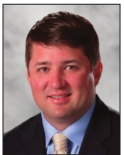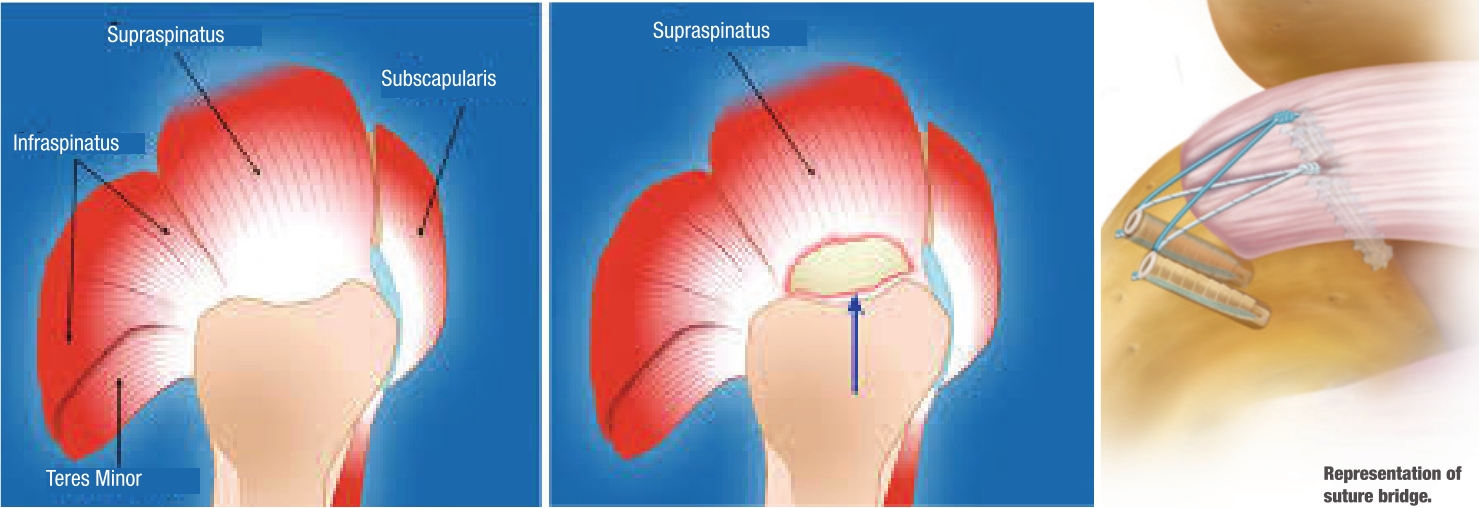ROTATOR CUFF TEARS

What is a rotator cuff and why do I need it?
The rotator cuff is a group of four shoulder muscles and their tendons, which anchor them to the upper arm bone, the humerus. The ball of the humerus helps to form the shoulder joint, and the rotator cuff tendons help to stabilize the ball on the socket. The muscles/tendons of the rotator cuff are called the subscapularis, supraspinatus, infraspinatus and teres minor. When the tendons of the rotator cuff tear, it leads to the inability to have full shoulder range of motion, weakness with overhead activity/sports and lifting, shoulder pain and sometimes instability. Activities of normal daily living, such as brushing your hair or teeth, putting on makeup, changing clothes and driving a car, can be affected by these injuries.
 At least two million people each year are treated in the United States for rotator cuff problems. People who perform daily lifting and overhead tasks, such as painters, electricians, construction workers and assembly line workers, are prone to developing rotator cuff injuries.
At least two million people each year are treated in the United States for rotator cuff problems. People who perform daily lifting and overhead tasks, such as painters, electricians, construction workers and assembly line workers, are prone to developing rotator cuff injuries.
These tendons have a poor blood supply, which makes them unable to heal once they are torn. Rotator cuff tears occur more as people age as the tendons can become frayed and torn over time by bone spurs. These tendon tears can also be a result of trauma, such as a fall onto an outstretched arm or lifting an object which is too heavy. Some rotator cuff tears are attributed to overhead sports, such as baseball, football and tennis, where the repetitive shoulder motion required for those sports “wears out” the tendon.
Symptoms of a rotator cuff tear include pain with motion, decreased range of motion, popping and weakness. It is common for patients with these injuries to have difficulty sleeping. Some patients can also develop a condition called adhesive capsulitis, or frozen shoulder, in which the shoulder joint severely stiffens as a result of the inflammation associated with a tendon tear.
Evaluation for a suspected rotator cuff tear consists of a physical exam by a physician, at which time range of motion, strength and areas of pain are assessed. X-rays are performed to assess the joint space between the ball and socket and to look for bone spurs, which can lead to tearing of the tendons. Ultrasound can be used to further evaluate the tendon integrity, but an MRI is the most accurate way to look at the tendons.
There are different degrees of tearing of the rotator cuff tendons. A low-grade partial tear means that the tendon is just frayed a bit or is torn less than 50 percent from where it attaches to the bone. These types of tears are typically treated without surgery first. A cortisone steroid injection is often given to decrease inflammation of the tissues around the tear and for pain relief. Physical therapy is prescribed to strengthen the surrounding muscles and maintain joint mobility. Antiinflammatory and pain medications can also be prescribed as necessary. If pain and/or weakness persist after six weeks of conservative treatment, surgery may be considered.
High-grade rotator cuff tears, where more than 50 percent of the tendon attachment is disrupted, can also be treated without surgery initially. However, a higher percentage of these patients will go on to require surgical treatment because the tendon is usually too weak to perform its normal function.
Complete or full rotator cuff tears are typically treated with surgery to repair the tendon back to the bone. The vast majority of surgeons today perform this procedure by the use of an arthroscope, which is a camera which is placed into the shoulder joint. The torn tendon can then be identified and repaired back to the bone in a minimally invasive way. The tendon is attached back to the bone typically by using devices called suture anchors, which are screws placed into the bone that have braided high-strength sutures threaded through them. These sutures, which are similar to braided fishing line, are then passed through the tendon, and then knots are tied down to secure the tendon to the bone. Bone spurs can also be removed during the procedure. This surgery is usually done in the outpatient setting, and nerve blocks are typically administered by the anesthesia service to control pain.
After surgery, a sling is used for six weeks to allow the tendons sufficient time to grow back to the bone. Supervised physical therapy is essential to regain full range of motion and strength, which can take several weeks and sometimes months. The larger the tear is at the time of surgery, the longer the recovery takes. Surgery success rates range from 80-90 percent.
Dr. Carlton Houtz is an orthopaedic sports medicine surgeon at Highland Clinic Center of Orthopaedics and Sports Medicine who routinely performs arthroscopic shoulder procedures. He can be reached at (318) 798- 4623, and his office is located at 1455 East Bert Kouns Industrial Loop, Suite 210, Shreveport, LA 71106. His office Web site is www .highlandclinic.com.

